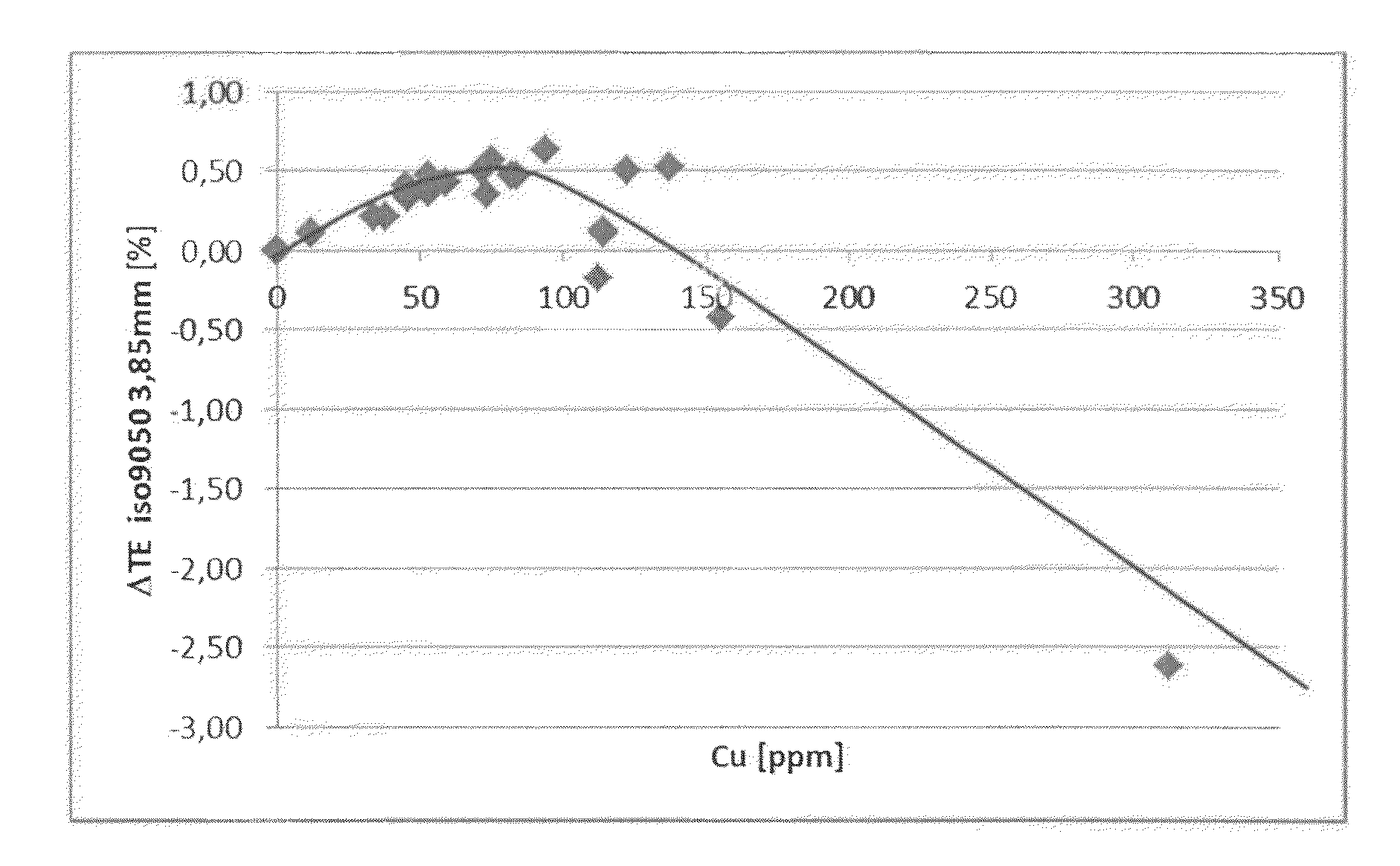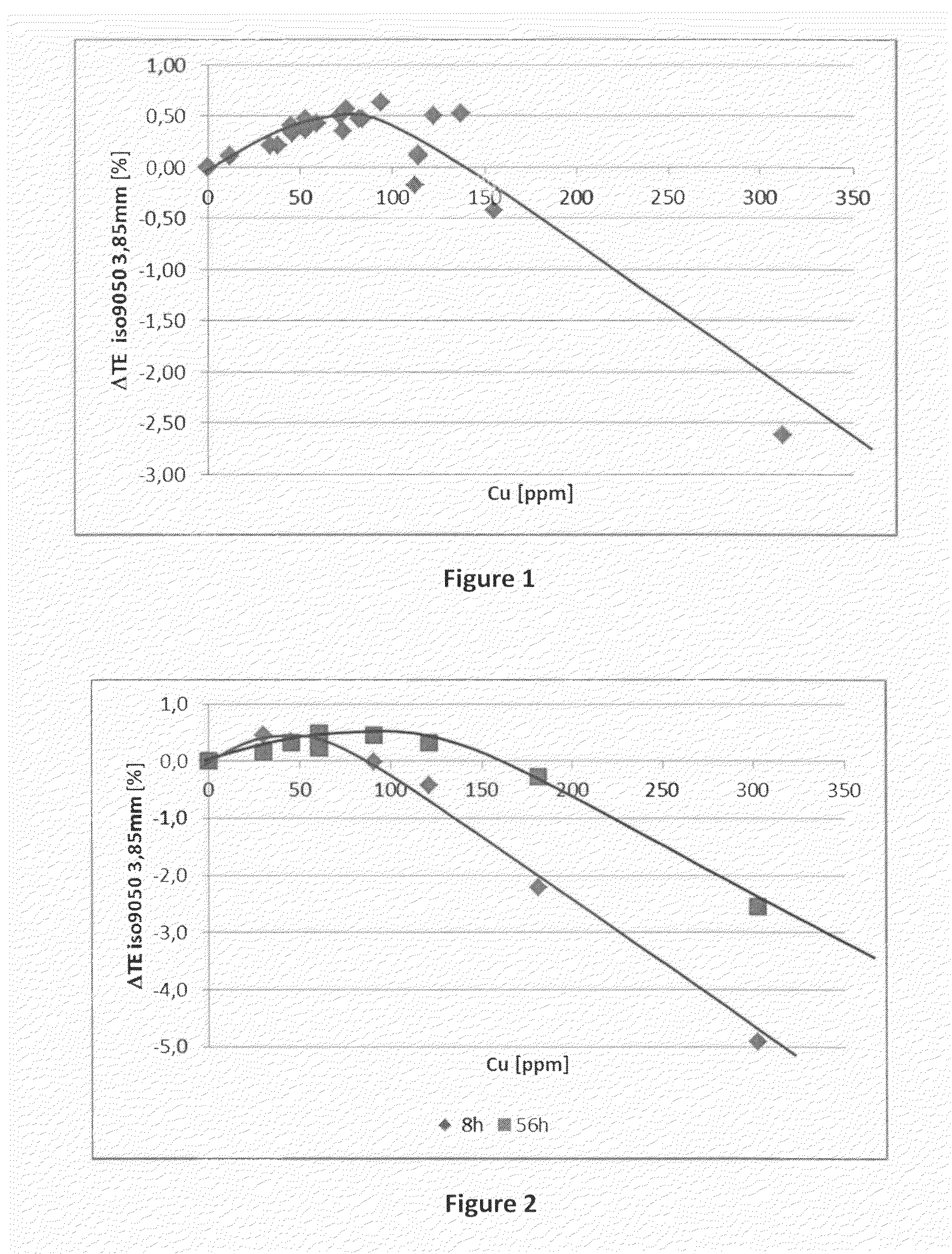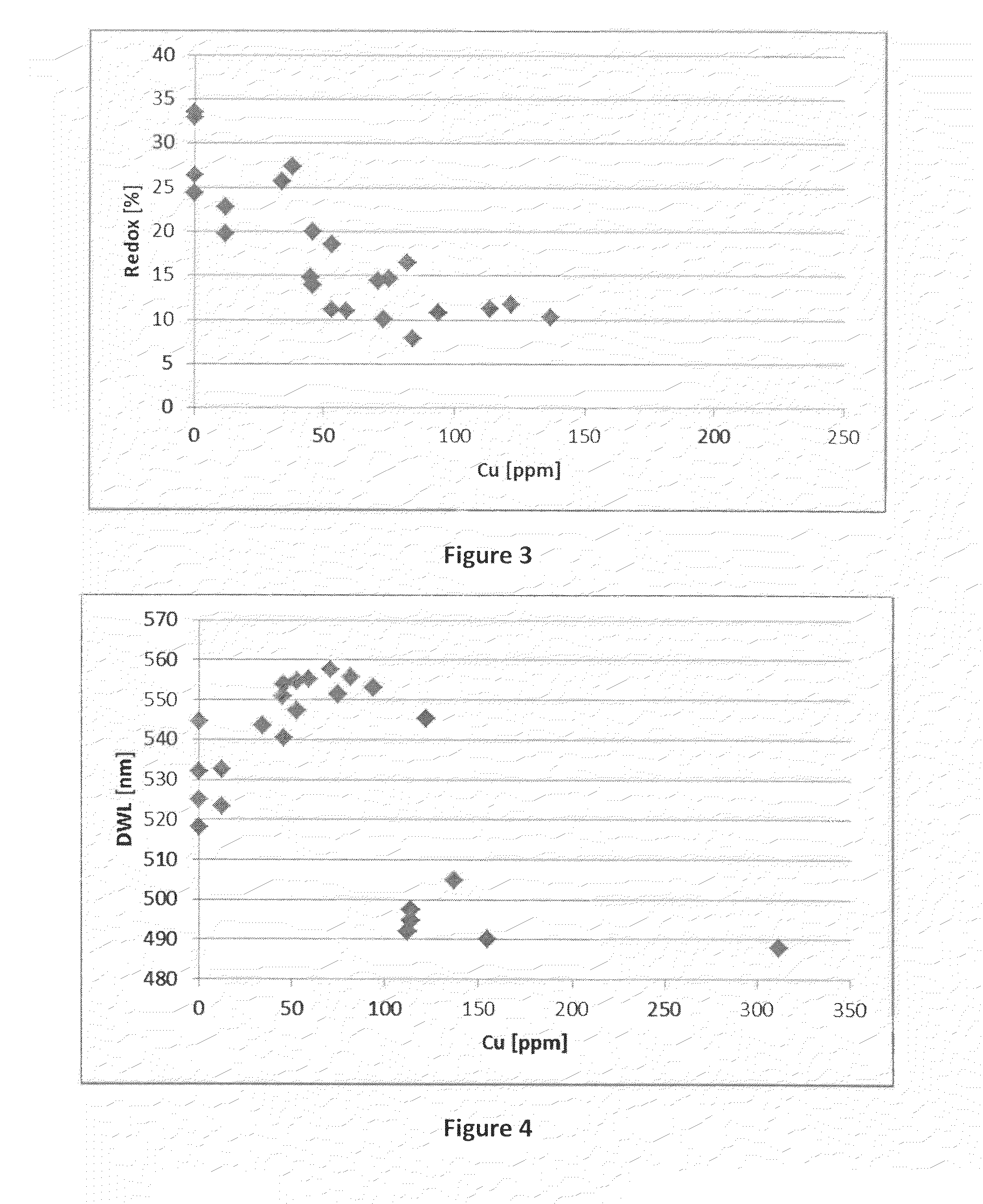Sheet of glass with high energy transmission
a technology of glass and energy transmission, applied in the field of glass with high energy transmission, can solve the problems of light transmission, generating undesirable glass coloration, and reducing the energy transmission of glass, so as to reduce the transition period
- Summary
- Abstract
- Description
- Claims
- Application Information
AI Technical Summary
Benefits of technology
Problems solved by technology
Method used
Image
Examples
Embodiment Construction
[0071]The following examples are intended to show the effect of the copper content on the energy transmission obtained, the light transmission obtained, the color of the glass and the redox for a certain copper content expressed as a percentage relative to the total weight of the glass.
[0072]The raw materials were mixed in the form of powder and were put in a crucible for melting, according to the composition (total iron=100 ppm) shown below. The copper was incorporated in the form of CuO. For all the glasses tested, the contents of the components were kept fixed apart from the amount of copper. The copper content (expressed in Cu) expressed as a percentage relative to the total weight of the glass is then variable from one glass sample to another.
[0073]
CompositionContent [wt %]CaO9K2O0.015Na2O14SO30.3TiO20.015Al2O30.7MgO4.5Copper (expressed in Cu)Variable (from ~0 to 0.035%) Total iron (expressed in Fe2O3)0.01
[0074]After melting, the optical properties of each sample of glass in th...
PUM
| Property | Measurement | Unit |
|---|---|---|
| thickness | aaaaa | aaaaa |
| thickness | aaaaa | aaaaa |
| dominant wavelength | aaaaa | aaaaa |
Abstract
Description
Claims
Application Information
 Login to View More
Login to View More - R&D
- Intellectual Property
- Life Sciences
- Materials
- Tech Scout
- Unparalleled Data Quality
- Higher Quality Content
- 60% Fewer Hallucinations
Browse by: Latest US Patents, China's latest patents, Technical Efficacy Thesaurus, Application Domain, Technology Topic, Popular Technical Reports.
© 2025 PatSnap. All rights reserved.Legal|Privacy policy|Modern Slavery Act Transparency Statement|Sitemap|About US| Contact US: help@patsnap.com



